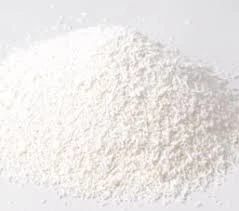
acidity regulator 296
Understanding E296 The Acidity Regulator in Food
In the vast world of food additives, E296, also known as malic acid, plays a significant role as an acidity regulator. This organic compound, commonly found in various fruits, especially apples, gives food products a refreshing tart flavor. By exploring the properties, uses, and safety considerations of E296, we can gain a deeper understanding of its importance in the food industry.
What is Malic Acid?
Malic acid is a naturally occurring dicarboxylic acid that is integral to various biological processes. It is not only responsible for the tartness in many fruits, but it also plays a critical role in the Krebs cycle, which is the body's way of generating energy from carbohydrates. When referred to as E296, malic acid is used primarily in the food industry as an acidity regulator, flavor enhancer, and stabilizer.
Properties of E296
E296 is a white crystalline substance that can dissolve in water and has a relatively low toxicity level. It has a pH value that generally ranges between 3 and 4, making it effective at regulating acidity levels in food products. This acidity regulator offers a slightly sour taste, making it popular in a variety of culinary applications.
Uses in Food and Beverages
Malic acid is commonly used in
1. Beverages Soft drinks, fruit juices, and energy drinks often incorporate E296 to enhance flavor profiles and maintain a balanced acidity level.
acidity regulator 296

2. Confectionery Candy manufacturers utilize malic acid to provide a sour punch to their products, appealing to consumers' taste preferences.
3. Dairy Products Yogurts, cheeses, and other dairy items benefit from E296, as it helps to preserve freshness and improve texture.
4. Processed Foods Malic acid is frequently found in processed foods, where it aids in flavor stabilizing and helps retain color.
5. Food Preservation As an acidity regulator, E296 also plays a role in extending the shelf life of various products by inhibiting the growth of harmful bacteria.
Safety and Regulations
The safety of food additives, including E296, is rigorously evaluated by various food safety authorities across the globe. Organizations such as the European Food Safety Authority (EFSA) and the U.S. Food and Drug Administration (FDA) have deemed malic acid safe for consumption when used within prescribed limits. While malic acid is generally considered non-toxic, excessive consumption may lead to gastrointestinal discomfort.
For consumers, it is essential to be aware of food labels and ingredient lists. E296 is often listed on packaging, allowing informed decisions regarding food choices. While the majority of the population can enjoy products containing E296 without any adverse effects, those with specific allergies or sensitivities should consult with healthcare professionals before consuming products that list malic acid as an ingredient.
Conclusion
E296, or malic acid, is a multifaceted food additive that enhances the taste, safety, and longevity of various products within the food industry. Its natural occurrence in fruits combined with its effective properties makes it an essential ingredient for many food manufacturers. As consumers become increasingly aware of what goes into their food, understanding the role of acidity regulators like E296 aids in making informed dietary choices. Whether enjoying a refreshing beverage or a tangy candy, E296 continues to be a staple in delivering the delightful tartness that many of us appreciate in our daily diets.
-
Aluminum Hydroxide: Quality Gels & Dried Gel AntacidNewsAug.31,2025
-
Buy High-Quality Trichloroisocyanuric Acid for Sale | TCCA 90% SupplierNewsAug.30,2025
-
Pure Sodium Dichloroisocyanurate Dihydrate | Powerful DisinfectantNewsAug.29,2025
-
Industrial Chemicals: Quality & Purity for Every IndustryNewsAug.28,2025
-
Nitrile Rubber Honoring Strict Production StandardsNewsAug.22,2025
-
Aspartame Ingredients Honoring Food Safety ValuesNewsAug.22,2025
-
Fertilizer for Balanced Plant NutritionNewsAug.22,2025
Hebei Tenger Chemical Technology Co., Ltd. focuses on the chemical industry and is committed to the export service of chemical raw materials.
-

view more DiethanolisopropanolamineIn the ever-growing field of chemical solutions, diethanolisopropanolamine (DEIPA) stands out as a versatile and important compound. Due to its unique chemical structure and properties, DEIPA is of interest to various industries including construction, personal care, and agriculture. -

view more TriisopropanolamineTriisopropanolamine (TIPA) alkanol amine substance, is a kind of alcohol amine compound with amino and alcohol hydroxyl, and because of its molecules contains both amino and hydroxyl. -

view more Tetramethyl Thiuram DisulfideTetramethyl thiuram disulfide, also known as TMTD, is a white to light-yellow powder with a distinct sulfur-like odor. It is soluble in organic solvents such as benzene, acetone, and ethyl acetate, making it highly versatile for use in different formulations. TMTD is known for its excellent vulcanization acceleration properties, which makes it a key ingredient in the production of rubber products. Additionally, it acts as an effective fungicide and bactericide, making it valuable in agricultural applications. Its high purity and stability ensure consistent performance, making it a preferred choice for manufacturers across various industries.





